
History of Sigiriya
-
By Purna
- Published On
Intro
Sigiriya Rock, the so-called “Lion’s Rock” is located only 16 kilometres from another ancient town Dambulla. The history of Sigiriya Lion’s Rock dates back about 15 centuries since it was first founded.
About 200 meters tall monolithic rock pillar was first established by King Kassapa who is a King of the Anuradhapura Era who ruled the country during 473-495 AD.
Born as a son of a lesser queen of his father Dhathusena’s harem, King Kassapa killed his father to gain the throne of the country established Sigiriya rock and used it as his citadel for 18 years till he assassinated himself.
King was said to have built Sigiriya as a rock fortress in 7 years and lived as a ‘cult of Kuvera’ in Sigiriya ‘Alakamanda’ palace located on top of the rock.
Bit of History
Sigiriya Rock was established by Sinhalese King Kashayapa during his reign AD 477-495, which he used as his citadel for Royal and Military functions. There’s a historical tale behind the construction of the Sigiriya rock fortress.
King Kassapa is said to have been born as a son to one of the concubines of his father King Dhathusena. Because of this reason, King Kassapa didn’t have any right to the crown of the country and his stepbrother “Moggollana” was the first contender for that.
Therefore, he killed his father king to acquire the throne of the country. To flee the great sense of guilt that he burdened, King Kassapa is said to have built the Sigiriya Rock Fortress and used it later to protect himself from his enemies and use it for Royal functions.
Unfortunately, the gracious 18 years story of Sigiriya ended in AD 495 when King Kassapa killed himself with his sword during a combat battle with his stepbrother Moggolana who came from south India with his battalion to take revenge and gain his throne for the country.
However, King “Moggollana” or any other Sinhalese Kings didn’t decide to make Sigiriya their citadel. Therefore Sigiriya was kept as a hidden place in the jungle until British scholars such as Magor Forbs, A.Y. Adams, J.Balie, T.W.Reese Dawid, T.W.Blekesly, H.C.P.Bell and A.Mare found Sigiriya Rock in the 18th century.
Statistics
Population: 1001 Approx
Area: 10km2
Province: Central
District: Matale
Spread across two hectares, the whole structure of Sigiriya rock and surroundings are considered some of the best examples of ancient Sri Lankan urban planning. Well-organized Garden premises consist of Water, Boulder, and Terraced gardens.
Water management, Water gardens and Ponds
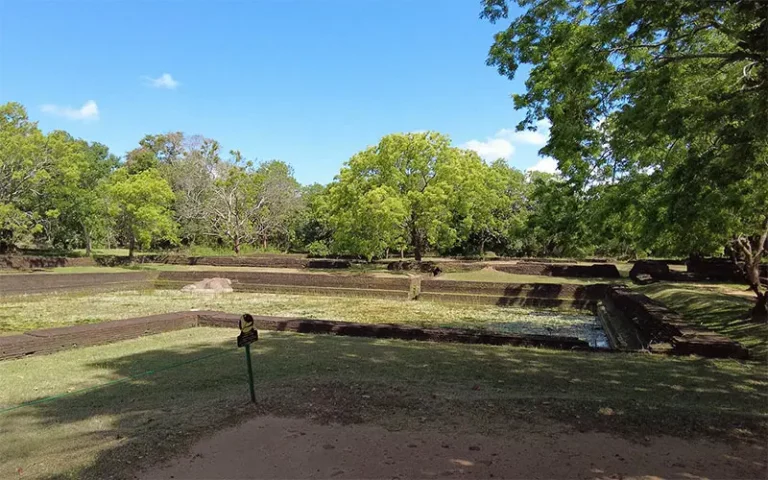
Water management technology has been considered a remarkable one compared to ancient times. This technology used a special mechanism to pump water from the bottom to the top of the Rock where King Kassapa was believed to live.
Water canals across the Royal Garden and stoned-water fountains use both the processing power of gravity and pressure, which are some of the highlights of the water management system of Sigiriya.
L-shaped water ponds that are located in the water garden are filled from the Sigiriya tank situated right next to the Sigiriya premises.
Lions' Paw
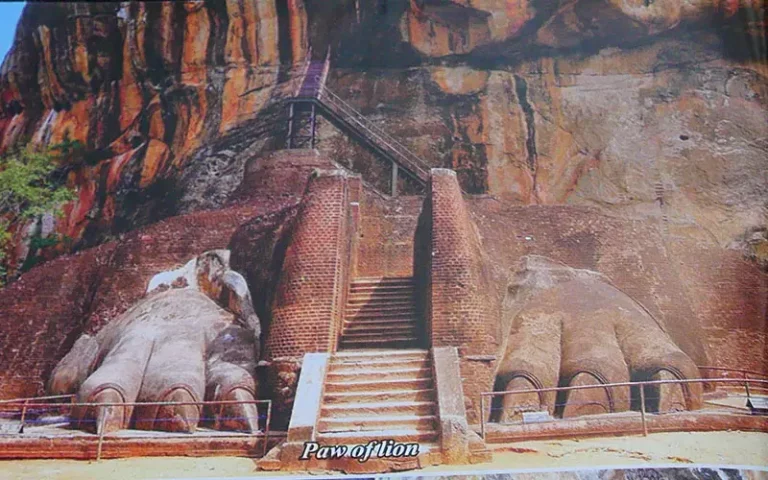
5th-century Lion’s paw can be found as you approach the open area and the final set of stairs. Lion’s paw Leeds anyone into the main entrance of the Sigiriya rock fortress and the palace.
Even though the feet of the Lion remain, it is believed that a head is attached to the body as well. Visitors can get the feeling that they are entering the summit from the Lion’s mouth!
Sigiriya Frescoes
Famous frescoes can be found halfway up the rock. Sigiriya frescoes are one classic example of the supreme talent of ancient Sri Lankan painters.According to the sources, these paintings may represent the weighted buxom ladies who are King Kassapa’s concubines attached to his harem.
Some say it represents the “Apsaras” or celestial nymphs. King Kassapa must’ve lived in his palace on top of the rock as a cult of Kuvera who wanted the entire fortress to be like heaven.
However, there were 500 frescoes in ancient times, limited to 21 to be seen today.
Mirror Wall & Graffitti
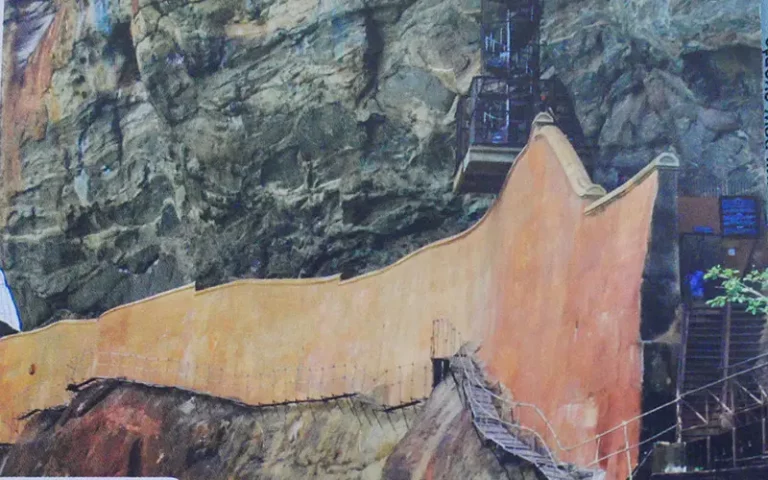
A 3-meter-high yellow-coloured mirror wall can be found next to the stairway. Graffiti was inscribed during the 6th-14th centuries when the Sinhalese letters are believed to have developed over time.
These letters are written in Sinhalese, Tamil and Sanskrit giving deep insight into ancient literacy, art and poetry.
Buy tickets for Lion’s Rock
The ticket price to enter the Sigiriya summit can cost 30$ for foreign adults. Citizens from SAARC countries can receive a 50% discount. It is also possible to buy tickets online.
Where to go from there?
Climbing the Pidurangala Rock
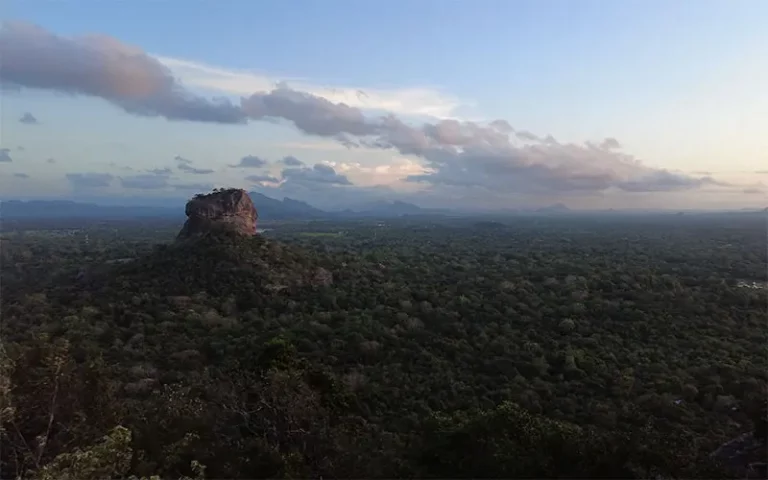
The history of Pidurangala is closely related to the history of the Sigiriya Era and goes beyond to 1st and 2nd centuries BC.
Caves and rocks suggest that there was a Buddhist monastery and Buddhist monks are scattered mostly for meditation activities in this area, especially during King Kassapa’s reign.
Pidurangala Rock is located a few kilometres to the north of the historical Sigiriya Rock. After climbing the Sigiriya Summit, Pidurangala Rock is somewhere you must visit if you still have time left during the day.
Climbing Pidurangala Rock can take up to an hour and is a tedious task compared to climbing Sigiriya Rock. You’ll need to be fit to climb Pidurangala Rock as the hike involves stumbling upon and jumping around the rocks to get to the final viewpoint on the top.
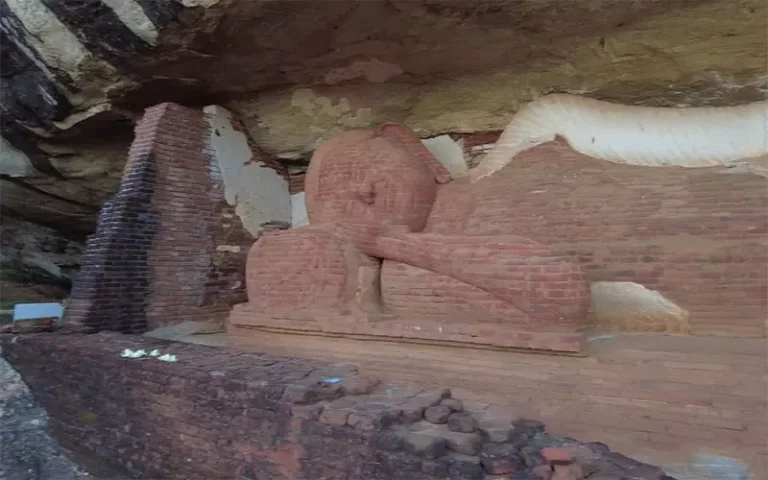
The hike starts with passing by the temple that is located at the entrance point where the cave temple is located.
Passing the main cave of 48 feet long statue of the reclining Buddha halfway through the hike, a 360-degree span breathtaking panoramic viewpoint on the top with the view of the entire area including gigantic Sigiriya Rock can be seen when you climb up to the top after half an hour to 1-hour hike.
If you wish to see a beautiful sunrise or sunset, try to reach the top by 6 am or 6 pm respectively.
Day tour to Dambulla: Visit Rangiri Dambula Cave and Royal Temple

Excursion to Dambulla has been a popular trail among Sigiriya visitors since it is located only a few minutes drive from Sigiriya village.
Dambulla is a particularly important place for pilgrims as it is one of eight UNESCO World Heritage sites in Sri Lanka, just because it is an ancient Rock cave temple. Comprises with 5 caves or shrine rooms, this magnificent rock temple was first built by King Valagamba in the 1st century BC to put refuge here.
The temple premises were renovated many times by various Sinhalese kings over time during the history.
This well-preserved Cave temple complex, undoubtedly the best-preserved cave temple premises in Sri Lanka has over 150 different states and magnificent paintings and interiors said to have been done by local and foreign painters.
Reaching there
Transportation
If you are looking for sightseeing and wildlife, adventure, honeymoon, cultural tour or pilgrimages, I can help you customize your tour according to individual wishes and requirements. Feel free to Contact Me mentioning your specific requirements.

Finding Accommodation








DISCLOSURE: Some of the links in this page may contain Affiliate links, means if you click through and make a purchase my account may earn a little commission but there will be no extra cost for you. This little commission will help maintain this web site and all social media channels plus boost my motivation to create useful contents for the travel community.

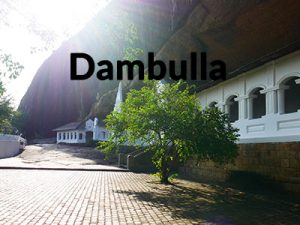

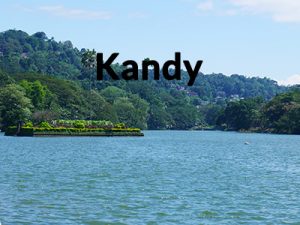

This Post Has One Comment
Pingback: 10 Best things to Do in Dambulla - Explore Sri Lanka's Cultural Gems